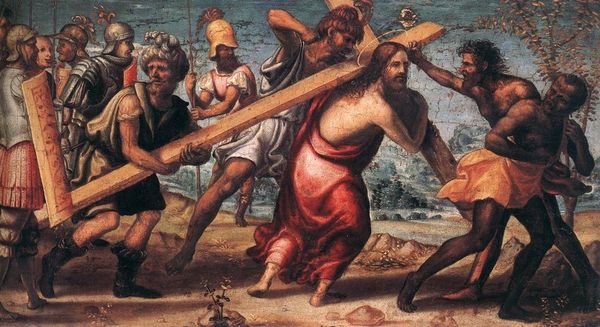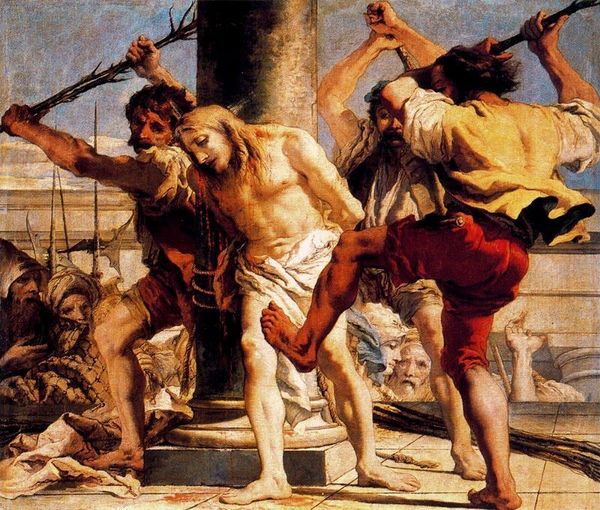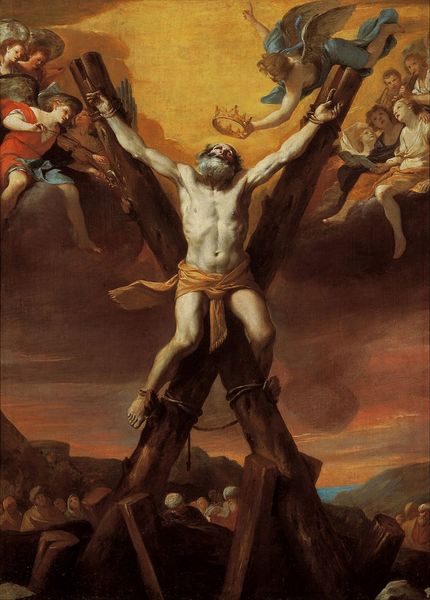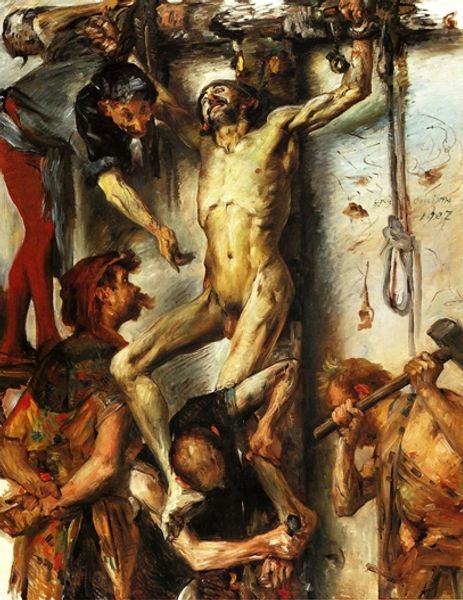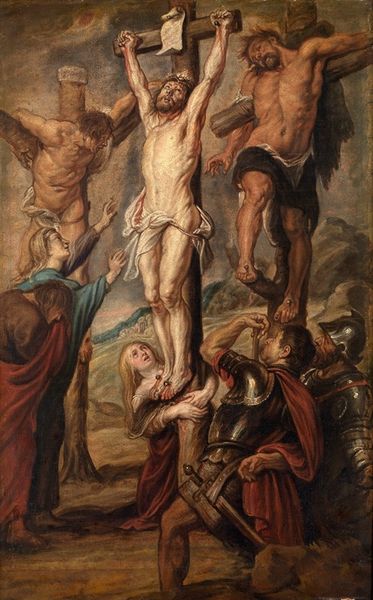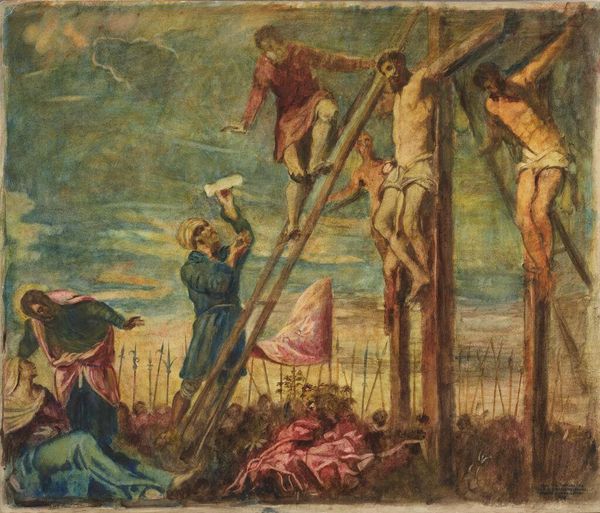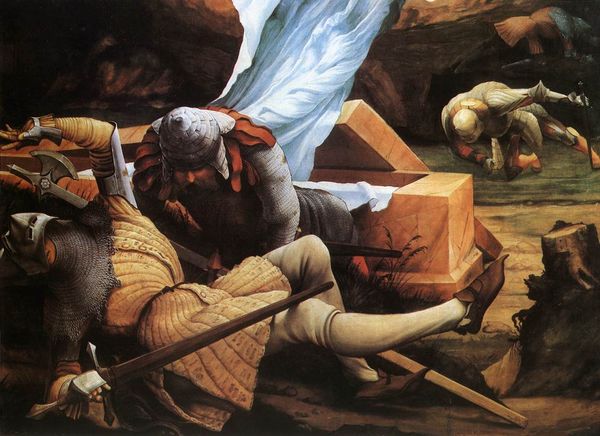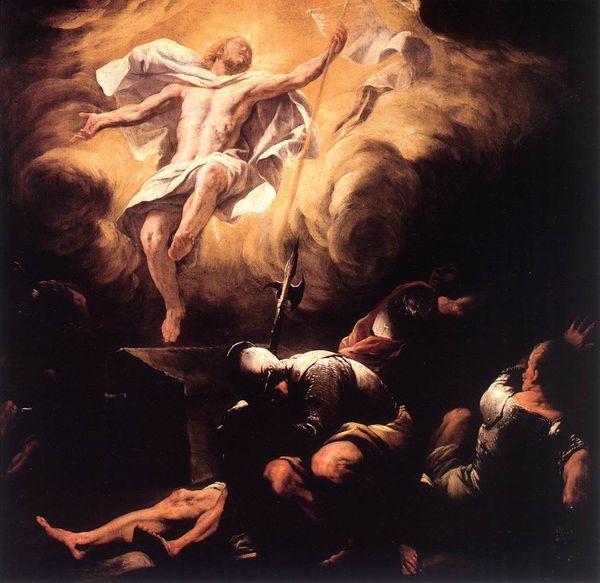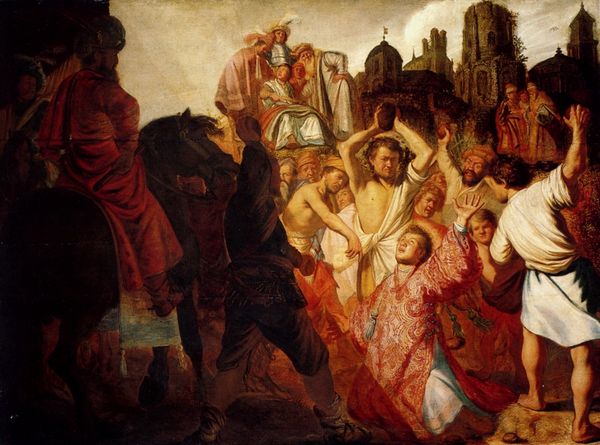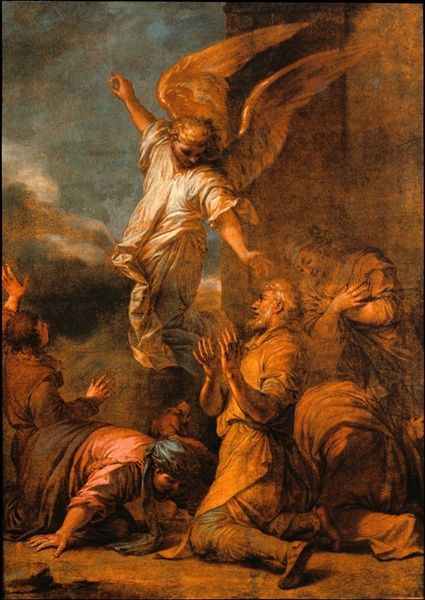
painting, oil-paint
#
baroque
#
painting
#
oil-paint
#
figuration
#
oil painting
#
history-painting
#
realism
Copyright: Public domain
Curator: Let’s turn our attention to "The Raising of the Cross," an oil painting completed in 1621 by Peter Paul Rubens, which is currently housed in the Louvre. Editor: The sheer dynamism hits you immediately, doesn't it? The raw struggle, the straining muscles, everything angles upwards with brutal force. Curator: Absolutely. Rubens was a master of the Baroque, a style that embraced drama and intense emotion, and that is palpable here. He painted this triptych shortly after returning to Antwerp from Italy. The church where it hung for many years was intended to make a strong statement about Catholic reformation ideals. Editor: The figures… their faces convey more than just physical effort. There's a sense of grim determination in some, but also of suffering reflecting the central figure. It’s a fascinating dance of symbols within a clearly theatrical moment. I can also see ladder-like symbol that can point to vertical progression and access of other worlds. Curator: Note how the spotlight on the scene seems almost divinely guided, underscoring the theological weight of the event, placing it above mundane events and rooting in celestial glory. The politics are more in how he chooses to depict such a grand, impactful scene that demands participation. Editor: Yet despite its glorification, it can also evoke something uncomfortable. A monumentality can be very appealing to authoritarian rule and those on the apex of pyramid schemes of various sorts. How did contemporaries receive the image? Curator: "The Raising of the Cross" garnered significant praise from early audiences, affirming his pivotal role in post-reformation Europe, a testament to Catholicism, if we look closely at what happened after its original creation. His large canvases and dynamic compositions would influence generations of artists. It’s also easy to view the scene today simply as a painting, detached from the historic moment. Editor: That's the exciting and simultaneously challenging part of historical imagery. How do we engage meaningfully with what past eyes were seeing in a changed present. Curator: Precisely! Rubens's command of technique, the figures and potent cultural symbolism creates a compelling testament to human ability, as much as of religious devotion. Editor: So even separated from the time, “The Raising of the Cross” can invite many questions and offer a powerful, and sometimes provocative, experience.
Comments
No comments
Be the first to comment and join the conversation on the ultimate creative platform.
